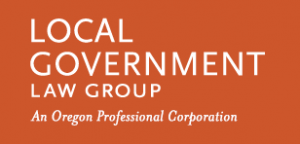Oregon Equal Pay Act of 2017
By Rebekah Dohrman
From our February 2018 e-newsletter
During the 2017 legislative session, legislators adopted House Bill 2005, the Oregon Equal Pay Act. The law is now in effect and likely impacts local governments, as employers, in a number of different ways. In a nutshell, the law is intended to end differences in pay between employees of the same employer. In more detail, the new law prohibits discrimination between employees who perform work of comparable character on a basis of a protected class in the payment of wages or other compensation. The new law includes the following definitions: “Protected class” is defined as a group of persons distinguished by race, color, religion, sex, sexual orientation, national origin, marital status, veteran status, disability or age. “Compensation” is defined to include wages, salary, bonuses, benefits, fringe benefits and equity-based compensation. Further, effective January 1, 2019, the new law makes it an unlawful employment practice under ORS Chapter 659A (Unlawful Discrimination laws) for an employer to:
1. Discriminate between employees on the basis of an employee’s status as a member of a protected class in the payment of wages or other compensation for work of comparable character;
2. Pay wages or other compensation to any employee at a rate greater than that at which the employer pays wages or other compensation to employees of a protected class for work of comparable character;
3. Screen job applicants based on current or past compensation;
4. Determine compensation for a position based on current or past compensation of a prospective employee; and
5. Seek the pay history of an applicant or employee from the applicant or employee or a current or former employer of the applicant or employee before the employer makes an offer of employment to the prospective employee that includes an amount of compensation.
6. While it may be no surprise that the new law applies to existing employees, as you can see in the list above, the new law also applies to job applicants or prospective employees. Employers are no longer allowed to ask job applicants for current or previous salary history. The portion of the new law that applies to job applicants went into effect on October 6, 2017. As of that date, it became illegal for employers to screen candidates based on compensation history or ask prospective employees about compensation history.
To comply with the new law, local governments should take the following steps:
1. If you haven’t already, immediately review your job application materials to make sure that they do not ask applicants for prior or current compensation history or compensation requirements. Also, review your interview questions and update staff on the new law to prepare for interviews.
2. This year, assess how you pay your employees. If you encounter disparities, evaluate those disparities to determine whether they can be justified under the law or whether they violate the new law.
On January 1, 2019, BOLI will begin enforcing all aspects of the law. In the meanwhile, be on the lookout for rules from the Bureau of Labor and Industry to help implement this new law and updated workplace notice posters for posting. If you are concerned about how this law could impact your entity or if you suspect that there are pay inequalities in your entity, please contact your legal counsel to discuss and strategize. If you’d like to read the entire bill, go to:
https://olis.leg.state.or.us/liz/2017R1/Downloads/MeasureDocument/HB2005
Where do I go for more information? BOLI’s frequently asked questions regarding the new law may be found at:
http://www.oregon.gov/boli/TA/Pages/Equal%20Pay%20Law.aspx
http://www.oregon.gov/boli/TA/Pages/Equal%20Pay%20Best%20Practices.aspx
